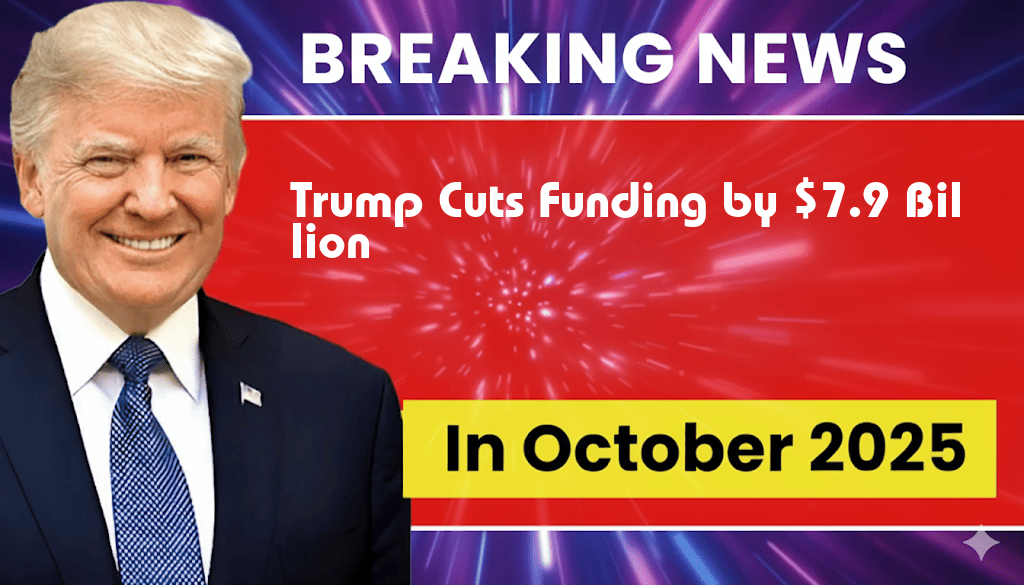In a significant move, former President Donald Trump has enacted the Rescissions Act, which aims to cut federal spending by $7.9 billion. This legislation targets various programs across different sectors, including education, healthcare, and infrastructure, as part of an effort to address the rising national debt and streamline government operations. The decision has sparked a polarized response among lawmakers, advocacy groups, and the public, with proponents arguing for fiscal responsibility while critics warn of the potential negative impacts on essential services. The act, which was signed into law last week, reflects ongoing debates surrounding federal spending priorities in a politically charged environment.
Details of the Rescissions Act
The Rescissions Act focuses on eliminating unspent funds from previous appropriations, reallocating those resources towards deficit reduction. Here are some key aspects of the legislation:
- Targeted Cuts: The act identifies specific programs and initiatives that will face funding reductions, including education grants and public health funding.
- Deficit Reduction: The primary goal is to decrease the federal deficit, which has been a contentious issue among policymakers.
- Implementation Timeline: The cuts are expected to take effect immediately, impacting the fiscal year budget for 2024.
Political Reactions
The passage of the Rescissions Act has elicited a variety of responses from both sides of the aisle. Republican supporters argue that the measure is necessary for improving fiscal health and ensuring that taxpayer money is used efficiently. Senate Minority Leader Mitch McConnell praised the act, stating, “We must prioritize our spending and eliminate wasteful programs that do not serve the American public.”
On the other hand, Democrats and some advocacy groups have expressed strong opposition, citing concerns that the cuts will adversely affect vulnerable populations. Senator Chuck Schumer criticized the legislation, claiming, “These cuts will harm essential services that millions of Americans rely on, especially in education and healthcare.” Many have called for a more balanced approach to budget management that does not disproportionately impact low-income families.
Impact on Specific Programs
The act’s funding reductions will affect several key areas. Below is a table summarizing the estimated cuts to major programs:
| Program | Estimated Cut ($ Millions) |
|---|---|
| Education Grants | 2,500 |
| Public Health Initiatives | 1,200 |
| Infrastructure Projects | 1,500 |
| Housing Assistance | 800 |
| Environmental Programs | 1,900 |
Public Response and Advocacy
As news of the Rescissions Act spreads, public opinion appears divided. Advocacy groups are mobilizing campaigns to raise awareness about the potential consequences of these funding cuts. Organizations such as the National Academy of Sciences and the Center on Budget and Policy Priorities have voiced concerns that the cuts may lead to increased poverty and reduced access to essential services.
Protests and public forums are being organized across the country, emphasizing the need for a more equitable distribution of federal funds. “We need to hold our leaders accountable for decisions that impact our communities,” said a local activist during a recent rally in Washington, D.C.
Looking Ahead
The future of the Rescissions Act remains uncertain as it faces scrutiny in Congress. Lawmakers are expected to engage in further discussions regarding budget priorities and potential amendments to the legislation. With the 2024 elections approaching, the implications of this act could play a significant role in shaping the political landscape and influencing voter sentiment.
As debates continue, stakeholders from all sides are urged to engage in constructive dialogue to address the challenges posed by federal spending and the need for fiscal responsibility without sacrificing essential services.
For more information on the Rescissions Act and its impact, you can visit the Congress.gov website.
Frequently Asked Questions
What is the Rescissions Act introduced by Trump?
The Rescissions Act is a legislative proposal aimed at reducing federal spending by cutting funding to various programs and initiatives, totaling approximately $7.9 billion.
Which programs are affected by the funding cuts?
The funding cuts impact a range of federal programs, including certain welfare initiatives, infrastructure projects, and other discretionary spending areas.
What is the purpose of implementing the Rescissions Act?
The primary purpose of the Rescissions Act is to promote fiscal responsibility by reducing the federal budget deficit and reallocating funds to priority areas as determined by the administration.
How will the $7.9 billion reduction affect the federal budget?
The $7.9 billion reduction is expected to streamline the federal budget by eliminating unnecessary expenditures, potentially leading to a more balanced budget in the long term.
What are the potential criticisms of the Rescissions Act?
Critics argue that the Rescissions Act may undermine important services and programs that benefit low-income individuals and communities, raising concerns about its overall impact on public welfare.
